DEFINITION OF TERMS:
- KEYSTONE means they are listed by National Wildlife Federation as core plants for a wildlife garden in my ecoregion (Ecoregion 8).
- NOT QUITE NATIVE means they are slightly out of range but adjacent to NYS as determined by GoBotany and NY Flora Atlas.
- Otherwise the plant is a NY-native or native to the area noted.
Understory trees aren’t as large or as long-lived as the big hardwood canopy trees, but they provide a lot of habitat benefits. They’re an important middle layer in the overall landscape. And since they’re destined to grow under large trees, they generally don’t need much sun.
KEYSTONE: Eastern serviceberry (Amelanchier canadensis)
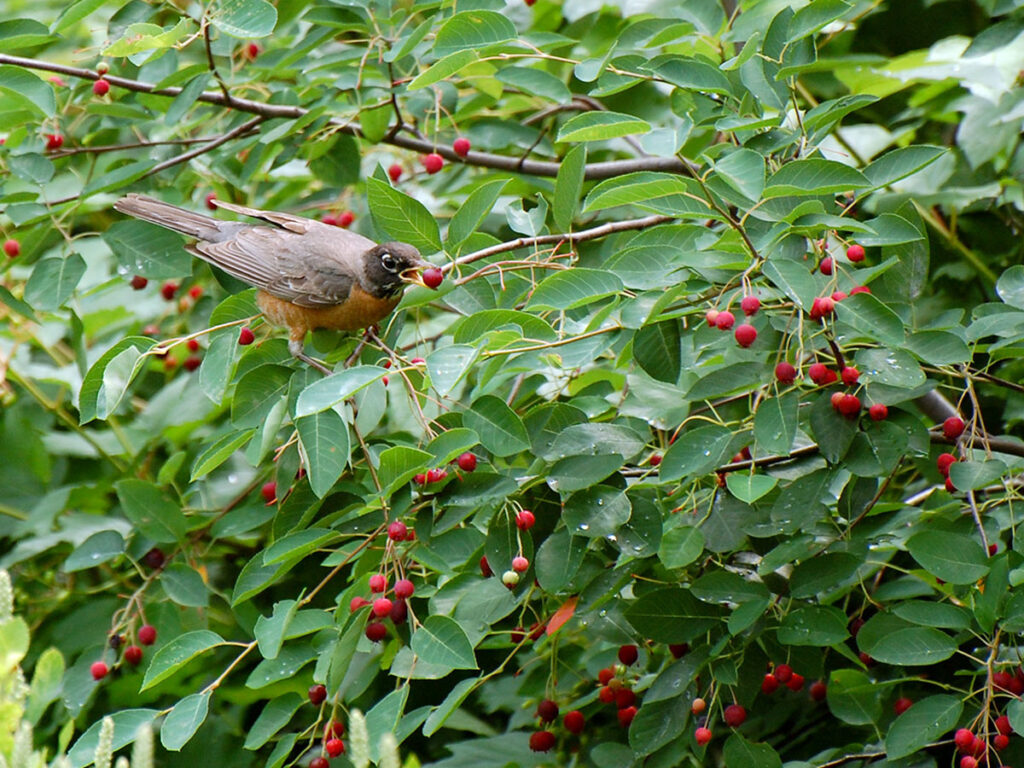
Serviceberry is a wonderful three-season plant. We have three eastern serviceberries (aka shadbush) that provide many berries for birds early in the season. In fact, they’re sometimes called “Juneberries.”
Robins, catbirds, chickadees, and cardinals especially like them.
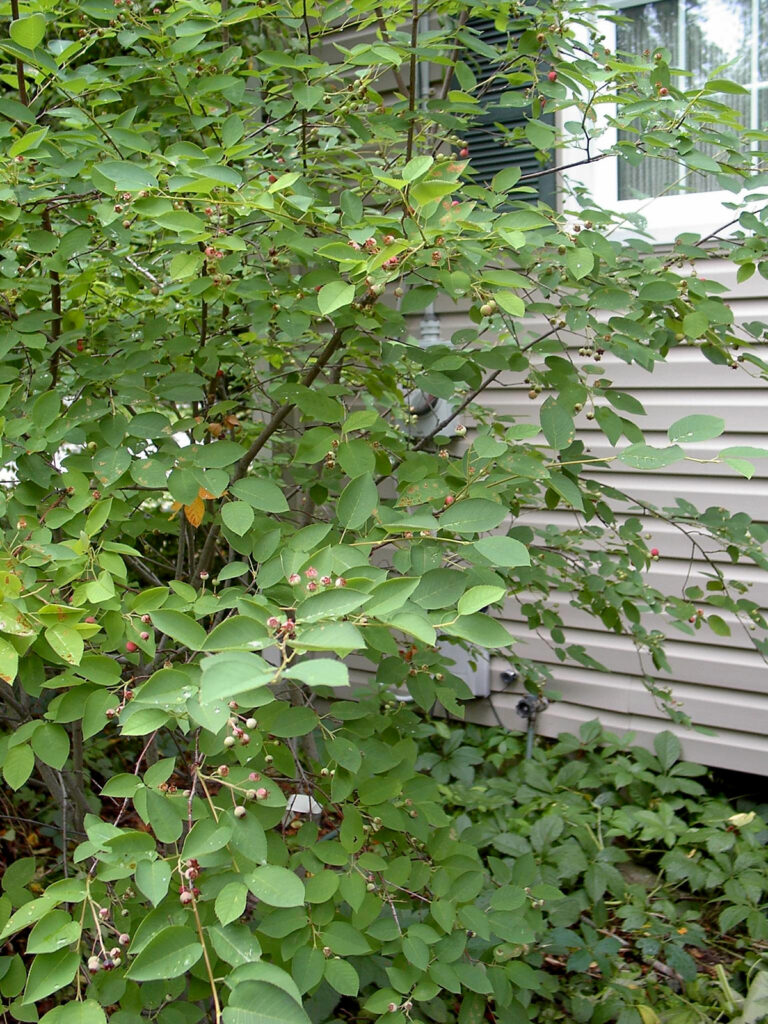
Eastern serviceberry can get to be quite tall, which was probably why the ‘Glenform’ cultivar (see the next photo) was selected. But the plain species has a lot more habitat value. It has beautiful flowers in the spring and gorgeous fall color.
Wildlife: Important plant for birds
** SPECIAL VALUE TO NATIVE BEES **
** SUPPORTS CONSERVATION BIOLOGICAL CONTROL **
- Learn more:
- Wildflower Center: Eastern serviceberry
Serviceberry (Amelanchier canadensis ‘Glenn Form’ Rainbow Pillar)
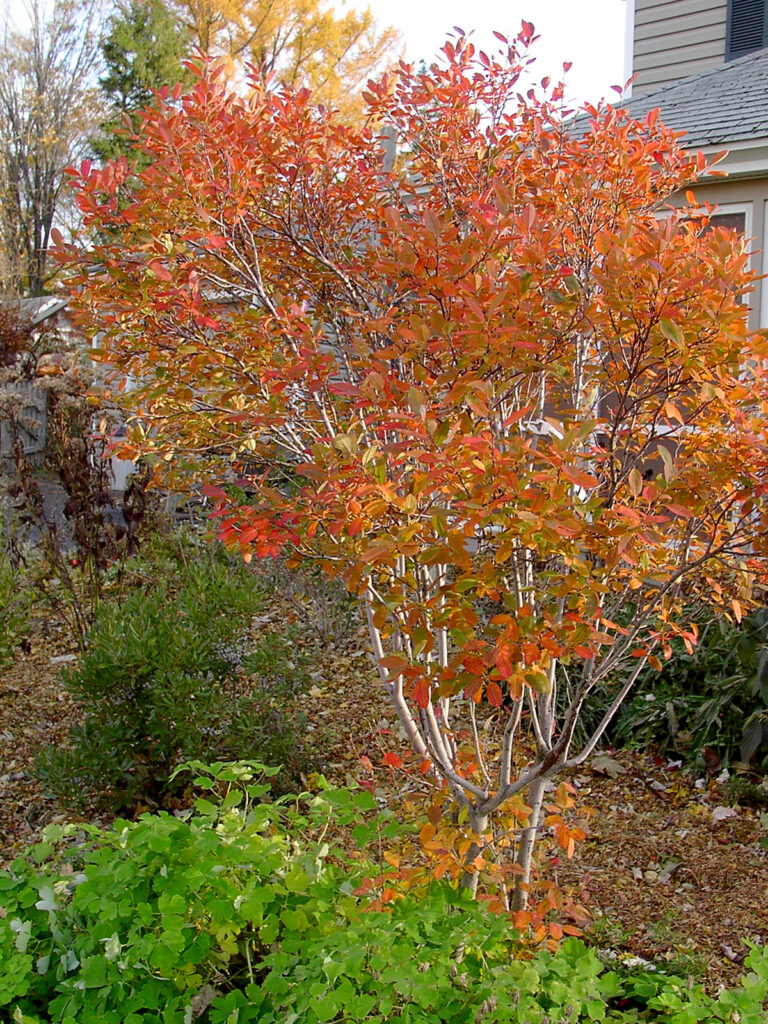
This is a cultivar called ‘Glenn Form’. Back in the early days of my habitat garden, it was one of the few native shrubs I could find. As a cultivar, it was more expensive than the plain species would have been, but I was excited to find a native shrub at all. After waiting a few years, I still didn’t see many berries. In the meantime I had found the plain species, which produced lots of berries.
Then I came across this description from the Missouri Botanical Garden: “RAINBOW PILLAR® has white 5-petaled flowers and purplish black fruits typical of the species but less than 10% of the flowers produce mature fruit. … Best in woodland, naturalized or native plant gardens, especially with dark or shaded backdrops which tend to highlight the form, flowers and fall color of the plant.”
Huh? So even though it has few berries, it’s good for a native plant garden for its decorative properties?? We cut down this expensive cultivar. Instead we enjoy watching the birds devour the many berries our plain Amelanchier species produce.
Apple serviceberry (Amelanchier x grandiflora)
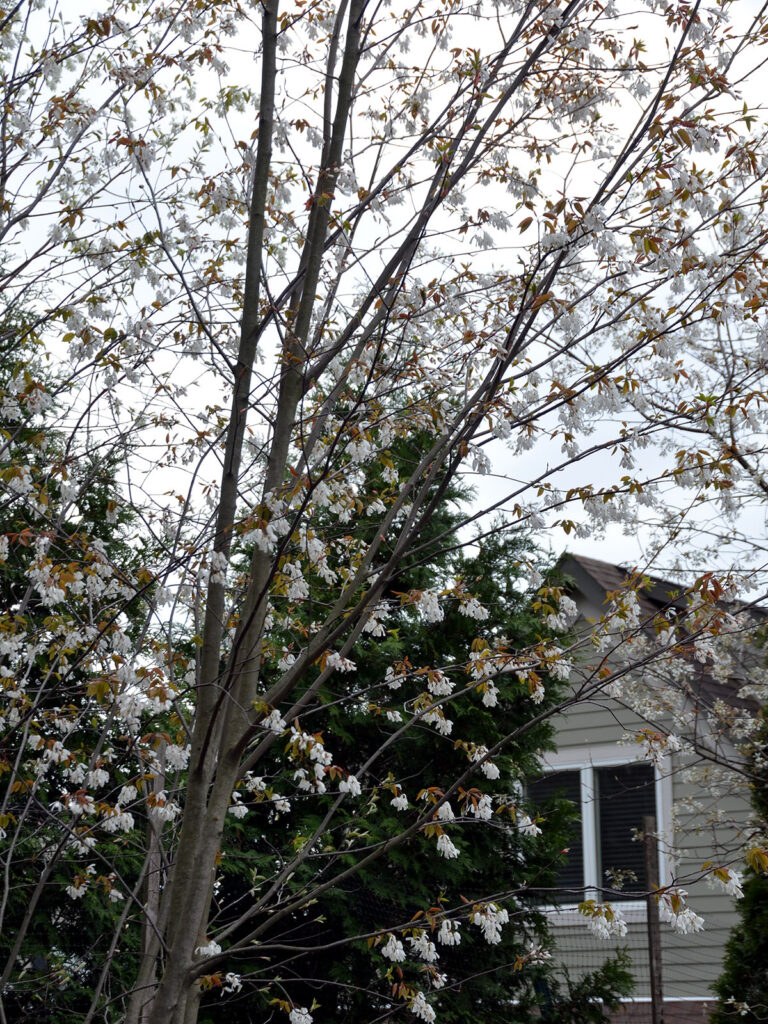
Apple serviceberry is a naturally-occurring hybrid between two native serviceberries A. arborea and A. laevis. As the botanic name indicates, it does have larger flowers, and they seem to produce berries a little later than our other serviceberries so it serves to extend the season a bit.
Unfortunately we sited it between a pagoda dogwood and our old kousa dogwood. When we removed the kousa, it left this plant a little one-sided, but we hope it will fill out a bit as it “senses” it has some more room.
KEYSTONE: Smooth serviceberry (Amelanchier laevis)
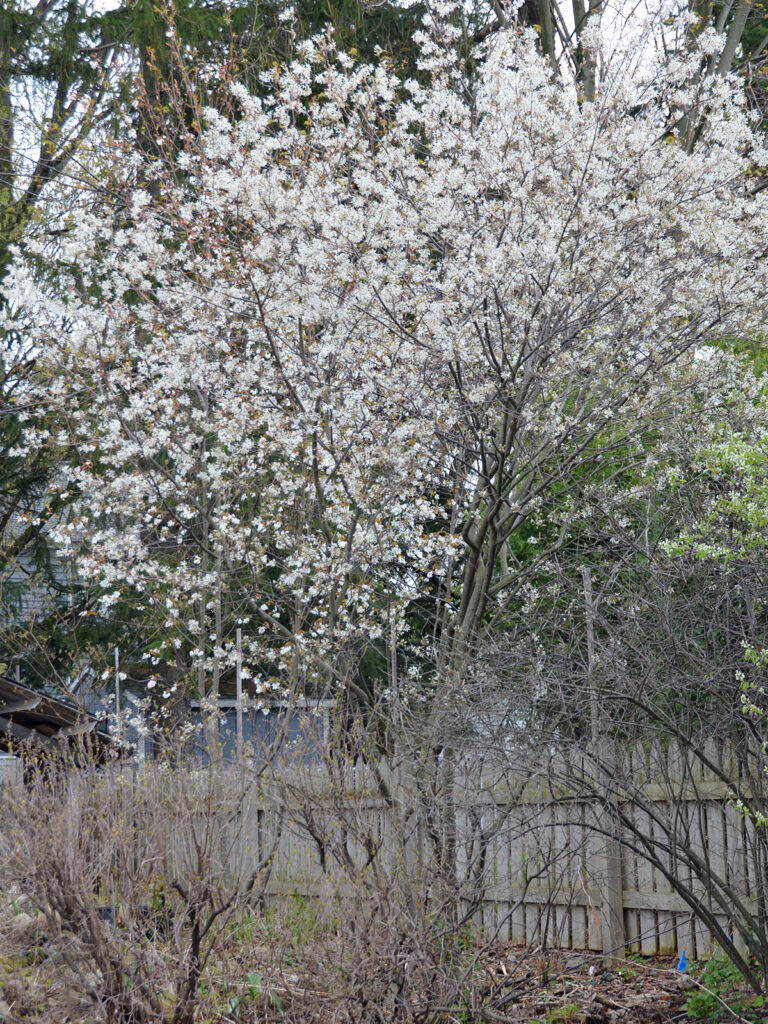
Smooth serviceberry (aka Allegheny serviceberry) is generally considered to be a nicer tree for a home landscape than its close relative downy serviceberry (A. arborea).
It was fairly small when we planted it, but it’s growing nicely, especially after some other competing trees were cut down.
Initially, its shape was affected by the competition (the cranberry viburnum), but we have since removed the viburnum, and it has filled out pretty well.
Wildlife: Food for birds, small mammals
** SPECIAL VALUE TO NATIVE BEES **
- Learn more:
- Wildflower Center: Smooth serviceberry
SE/MIDWEST (up to PA) NATIVE: Redbud (Cercis canadensis)
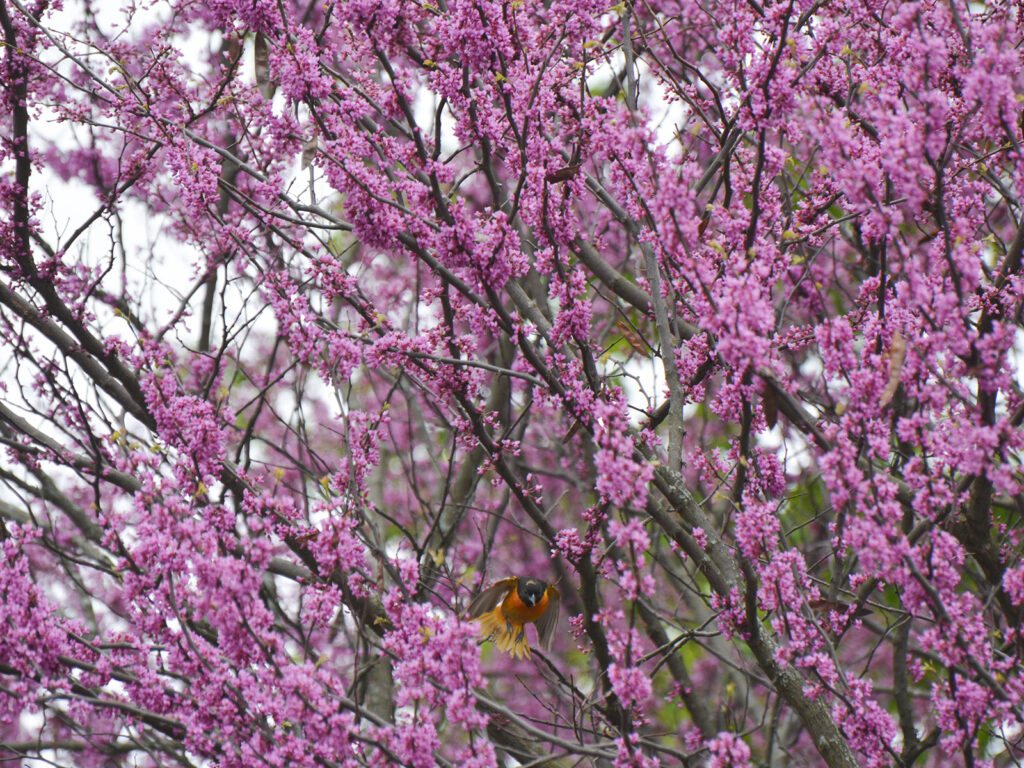
Redbud is beautiful in the spring, and it provides an early source of nectar. But this isn’t one of the trees that supports a lot of insects otherwise. It also has the very annoying habit of creating LOTS of volunteer seedlings. This particular tree (in the front yard) has some problems, and as an understory tree, its life is inherently limited.
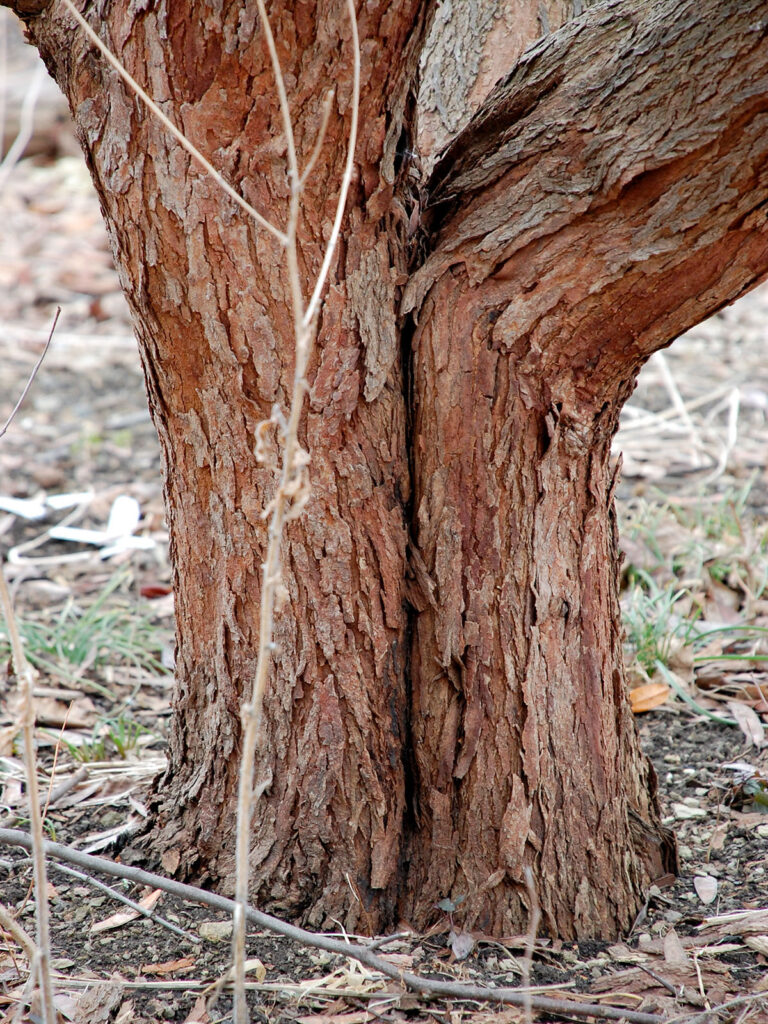
It’s also another case where we allowed multiple trunks to grow, so its structure isn’t as strong as it could be. We expect it will eventually come down. We’re thinking about what to do to provide shade, though, since our woodland garden is in that area.
In 2021, we planted a small red oak near the base of the redbud. We expect the redbud will come down one way or the other before the oak is affected.
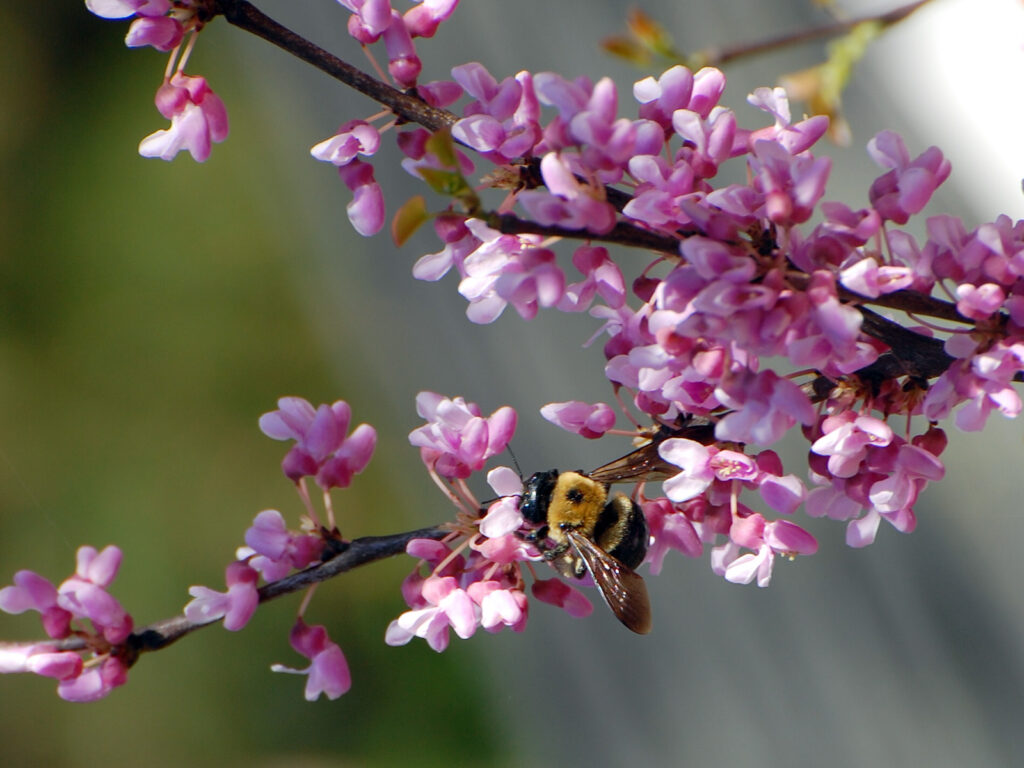
The flowers are glorious in early spring. It blooms before the leaves emerge, so it’s a mass of flowers in a very beautiful color. Very striking. It’s a valuable source of early-season nectar and pollen for newly-emerged bumble bee queens. I could almost forgive its tendency to create so many seedlings.
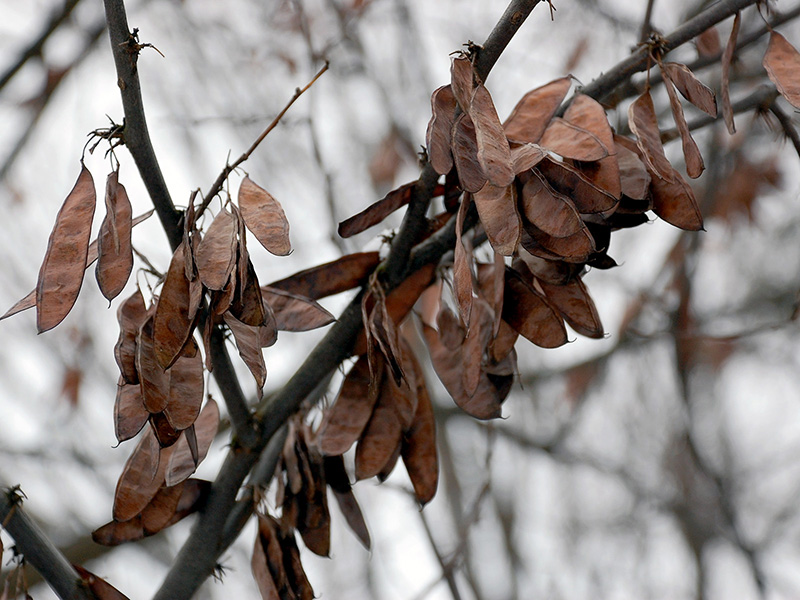
When the leaves are gone, the seedpods are prominently displayed throughout the winter. The chickadees love them (and I think they’re rather handsome as well). Unfortunately, they’re the source of the zillions of little redbud seedlings. Apparently every seed germinates (or at least it seems that way).
Wildlife: Birds
Deer resistance: Moderate
** SPECIAL VALUE TO NATIVE BEES **
** SPECIAL VALUE TO BUMBLE BEES **
** PROVIDES NESTING MATERIALS / STRUCTURE FOR NATIVE BEES **
- Learn more:
- Wildflower Center: Redbud
KEYSTONE: Pagoda dogwood (Cornus alternifolia)
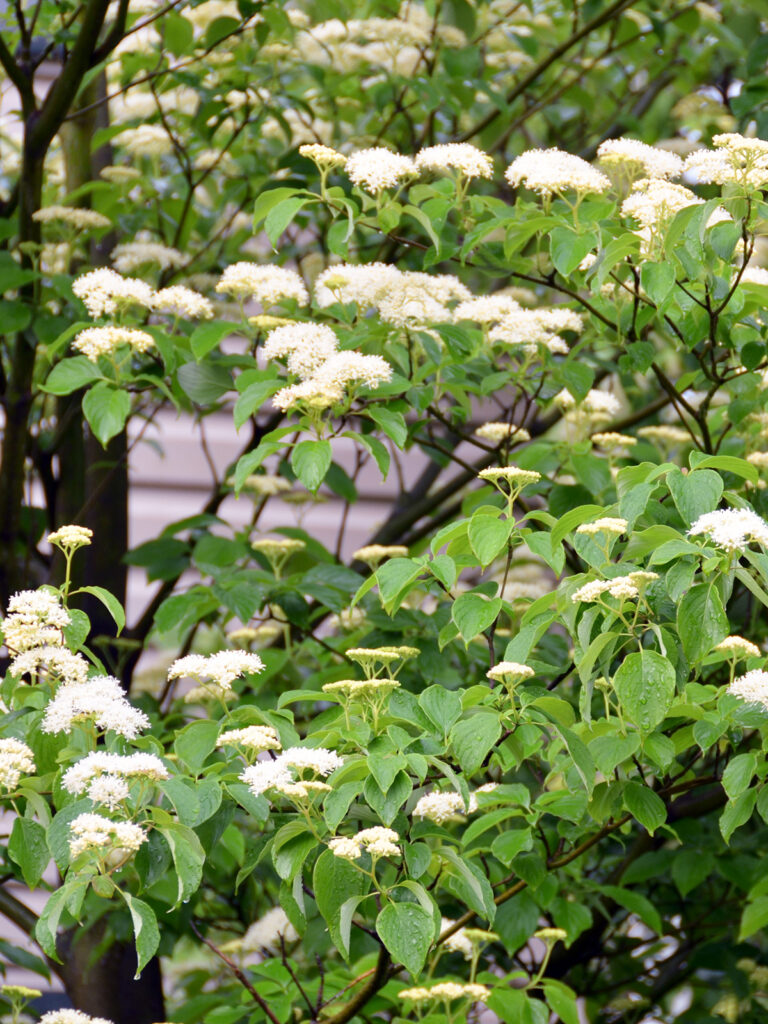
The pagoda dogwood is very attractive in the spring.
Note the horizontal branching structure. This is why it’s called pagoda dogwood. Ironically, this makes it sound like it’s an Asian introduction, but it’s one of our finest native understory plants.
It’s sometimes called alternate-leaf dogwood since it’s the only dogwood (that I know of) whose leaves alternate instead of being opposite each other.
Like most understory plants, it grows fairly quickly. It was just about two feet tall when we planted it, but about five years later, it was pretty much full-grown. In fact, the two small seedling trees we planted are now much more robust than the full-size pagoda a professional nursery planted in our yard. The shock of being transplanted was just too much for it, and after a few years, it served as a snag, before it keeled over completely. Perhaps we didn’t water it enough, but why get a plant that requires so much extra care when the seedlings grew so well with minimal attention?
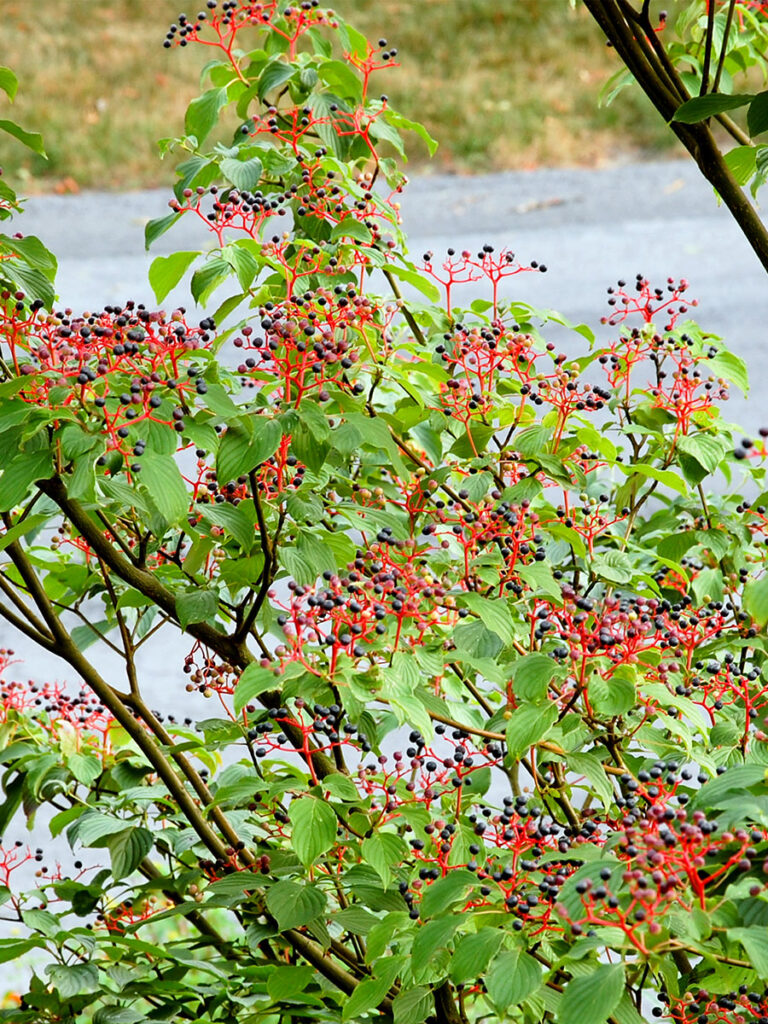
The berries are very attractive. They’re in the process of turning dark blue here. The pedicels (the part that attaches the berry) are red, so they’re ornamental, too, even after the berries are gone. And they will be gone! The birds can hardly wait to dive in to eat these extremely nutritious berries. We love watching them eat their “lunch” while we eat ours on the screen porch right next to our pagodas.
Attracts: Birds , Butterflies
Larval Host: Spring Azure
- Learn more:
- Wildflower Center: Pagoda dogwood
KEYSTONE: Flowering dogwood (Cornus florida ‘Cherokee Princess’)
(Sometimes known as “Benthamidia florida“)
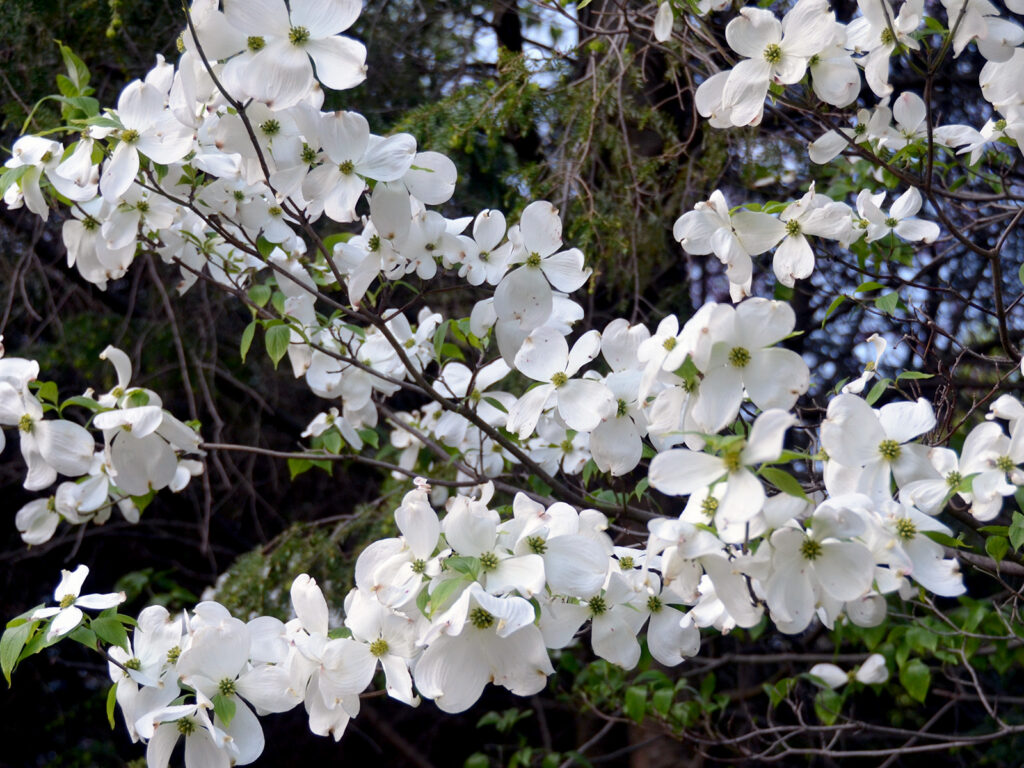
The classic dogwood flower!
It has white four-petal “flowers” though like the poinsettia, they’re actually the bracts. (The actual flowers are the little things in the middle.)
This particular variety is a cultivar called ‘Cherokee Princess.’ Though we try to avoid cultivars, in this case we selected it because we were told it was more resistant to anthracnose. However, now that I research it, I can’t find a reference to this property. This is another case when it pays to do your own research and not rely on what conventional nurseries say!
I wasn’t surprised to read that anthracnose was likely introduced to this continent by kousa dogwoods. Their continued presence keeps this problem going, so we removed the non-native Kousa that our landscaper had planted many years ago.
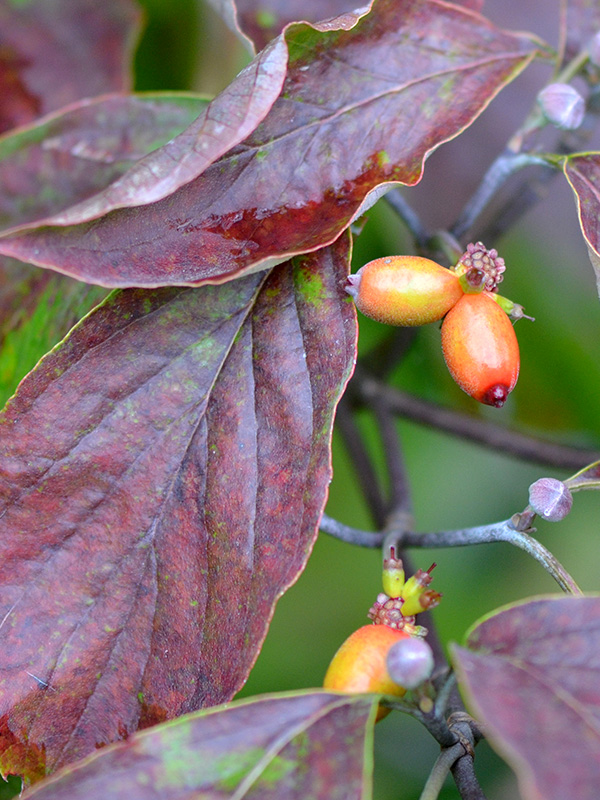
The flowering dogwood’s smallish red berries, unlike those of the Kousa dogwood, are just the right size for birds and very nutritious for them.
Wildlife: Fruit for birds, mammals, deer
Larval host: Spring azure
** SPECIAL VALUE TO NATIVE BEES **
** SUPPORTS CONSERVATION BIOLOGICAL CONTROL **
- Learn more:
- Wildflower Center: Flowering dogwood
